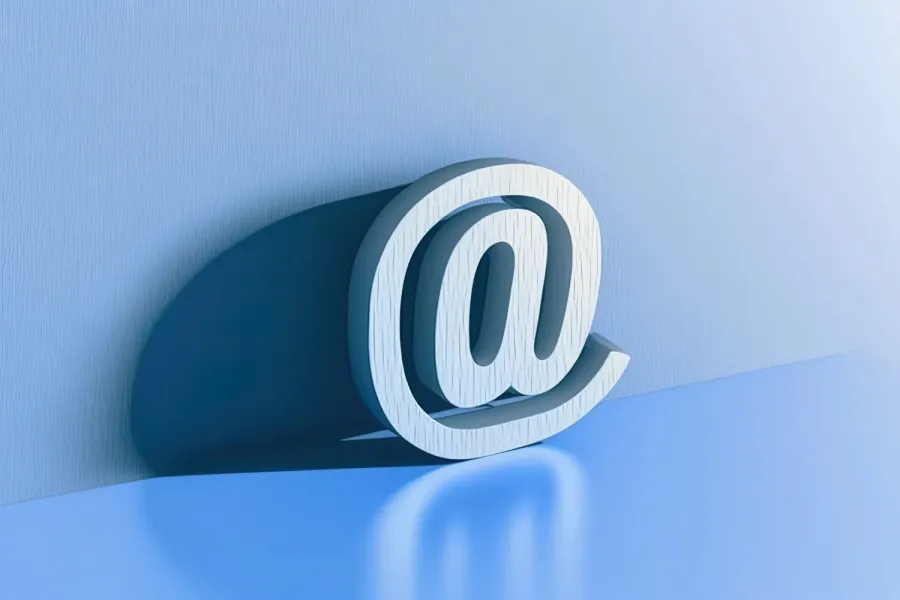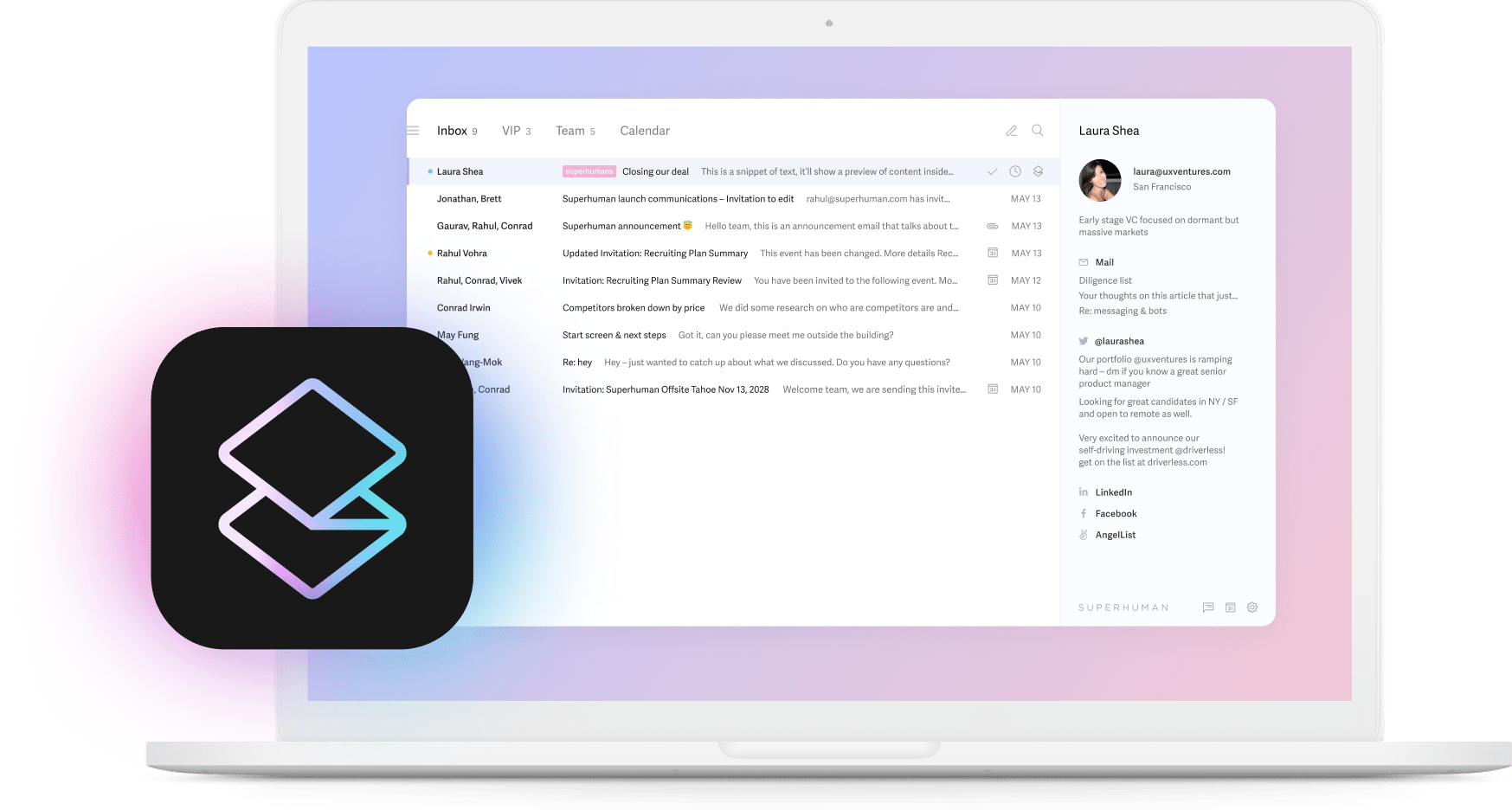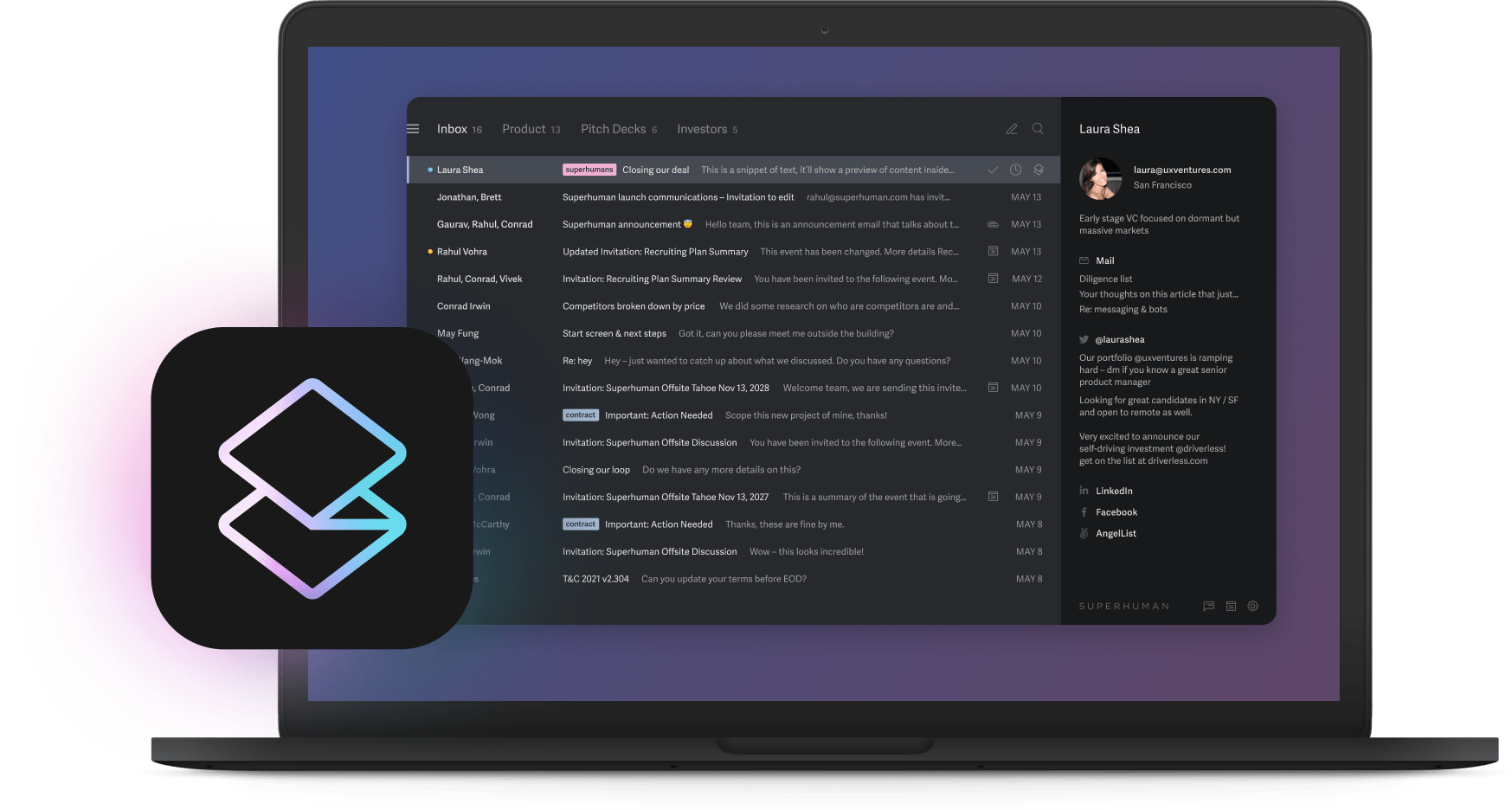
Your inbox has 247 unread emails. Again. Email aliases can cut that number in half while protecting your primary address from spam.
Here's how to create them on Gmail, Outlook, Apple Mail, and Superhuman Mail, plus the practical tips that official support docs leave out.
What is an email alias?
An email alias is a forwarding address that directs messages to another email account, typically your primary email address. Think of it as an alternative email address that delivers messages to an existing mailbox without creating a separate account.
Email aliases work like forwarding addresses: they keep your real email hidden, protecting you from spam and phishing attacks while streamlining inbox management.
How aliases differ from separate accounts
Aliases route messages to a primary inbox without needing additional authentication. Separate accounts demand independent credentials and storage. With aliases, unique addresses per service let you identify exactly which vendor leaked your information if one alias begins receiving spam.
Unlike plus-addressing techniques (username+tag@gmail.com) that many spam filters can easily parse, true aliases offer stronger privacy protection by presenting completely distinct addresses.
What are the benefits of using an email alias?
Are email aliases a good idea? In a word, yes. Email aliases offer three core advantages that make them worth setting up, whether you're managing a busy work inbox or just trying to keep your personal email organized:
Privacy protection
Using different aliases for different services means you can track exactly where spam originates. If your shopping alias starts receiving junk mail, you know that retailer sold your data. You can disable that single alias without affecting your primary address.
Organized inbox management
47% of digital workers struggle to find information needed to effectively perform their jobs, including critical emails buried in overwhelmed inboxes. Email aliases solve this by automatically organizing communications before they reach you.
Project-specific aliases like projectalpha@company.com centralize all related communication in one place. Departmental aliases (sales@, support@, billing@) work as centralized contact points that streamline communication flows while keeping conversation threads unified.
Professional brand management
An alias like contact@yourdomain.com offers a professional, targeted point of contact while routing messages to a centralized inbox. Using distinct aliases for each campaign or business function helps with precise response tracking.
What are some examples of email aliases?
Most aliases fall into four categories based on their purpose:
Role-based aliases
- support@yourcompany.com
- sales@yourcompany.com
- marketing@yourcompany.com
- careers@yourcompany.com
Location-based aliases
- newyork@yourcompany.com
- london@yourcompany.com
- tokyo@yourcompany.com
Newsletter or campaign aliases
- newsletter@yourcompany.com
- promotions@yourcompany.com
- productlaunch@yourcompany.com
Functional aliases
- noreply@yourcompany.com
- invoices@yourcompany.com
- feedback@yourcompany.com
How to create email aliases on popular platforms
Here's how to set up aliases on the most popular platforms, including the limitations and caveats that official support documentation tends to bury or skip entirely.
Gmail
Creating an email alias in Gmail enhances your email management, though Gmail primarily uses plus addressing rather than true aliases.
Log into your Gmail account and navigate to the settings menu. Under the "Accounts and Import" tab, find "Send mail as" and click "Add another email address."
Gmail plus addressing method
Add a plus sign (+) followed by a keyword directly before "@gmail.com" in your email address. For example, john.doe@gmail.com becomes john.doe+shopping@gmail.com for online purchases.
Important limitation: Plus addressing may not provide full privacy since the base address is easily extractable, and some spam systems can filter these addresses. This is something Google's own documentation doesn't emphasize.
Outlook
Microsoft Outlook offers true aliases, which is a significant advantage over Gmail's plus addressing approach.
- Log in to your Outlook.com account and navigate to Settings
- Select "Manage or choose a primary alias" then "Add an alias"
- Enter your new alias (e.g., john.sales@outlook.com for sales communications)
- Choose whether to send from this alias by default and configure reply settings
- Save changes
Outlook.com lets you create multiple aliases with the ability to send and receive from any alias directly within account settings. True aliases like those offered by Outlook create completely separate addresses that forward to your main inbox, whereas Gmail's plus addressing uses a modifier to the base address, which some services may filter or block.
Apple Mail
Creating an email alias in Apple Mail for iCloud accounts is straightforward but limited.
- Go to iCloud.com and sign in with your Apple ID
- Click on Mail, then click the Settings gear icon in the sidebar
- Select "Preferences" and then the "Accounts" tab
- Choose "Add an alias" and create your desired alias
Important limitation: iCloud customers can create up to 3 aliases per account. This makes Apple Mail less suitable for managing multiple organizational functions, though it remains adequate for personal email organization with limited alias needs.
Superhuman Mail
Superhuman Mail transforms alias management by bringing all your email accounts and aliases into one unified inbox. Unlike traditional email clients where you jump between multiple windows and interfaces, Superhuman Mail lets you manage Gmail, Outlook, and custom domain aliases seamlessly in one place.
How Superhuman Mail simplifies alias workflows
When you compose from a specific alias, Instant Reply analyzes messages you've sent to that recipient before and matches your tone and voice. The AI learns over time from your writing, becoming more accurate as you use it across different aliases and business contexts.
Key advantages of alias management
Split Inbox automatically organizes emails from different aliases into separate views, letting you process sales@, support@, and personal emails in dedicated workflows. You can set up custom rules per alias: flag all messages to your executive alias as high-priority, archive newsletters from your subscription alias automatically, and route vendor emails to specific folders.
Teams using Superhuman Mail save 4 hours per person every week and respond 12 hours faster across all their email addresses and aliases.
Integrating email aliases with productivity tools
Modern productivity ecosystems help you use email aliases strategically, transforming email management from reactive inbox triage to proactive communication routing.
Superhuman Mail integrates several key capabilities:
- Intelligent categorization: Automatically organizes emails from different aliases into designated folders, spotlighting high-priority communications according to your defined rules
- AI-assisted composition: Instant Reply learns communication patterns per alias to help maintain consistent, professional tone across different business functions
- Automated follow-ups: Remind Me brings messages back to your inbox at the perfect time so you never drop the ball on follow-ups
- Reusable templates: Snippets let you create templates with variables that automatically personalize messages per alias
You can customize automation rules per alias, creating sophisticated workflows. Sales aliases can integrate with CRM systems, support aliases may route to ticketing systems, and project aliases can funnel communications into team-accessible inboxes.
The bottom line
Email aliases let you separate communications by creating unique addresses for different services, helping you identify exactly which platforms have been compromised when spam increases. They protect your primary email account from phishing attacks and establish organized workflows where different aliases can be automatically routed to appropriate business processes.
Superhuman Mail helps you manage aliases across Gmail, Outlook, and custom domains in one unified inbox. Split Inbox automatically organizes emails from different aliases into separate views, and Instant Reply learns your communication patterns per alias to maintain a consistent, professional tone.
Try Superhuman Mail today and fly through your inbox. Teams save 4 hours per person every week and respond 12 hours faster across all their email addresses and aliases.






